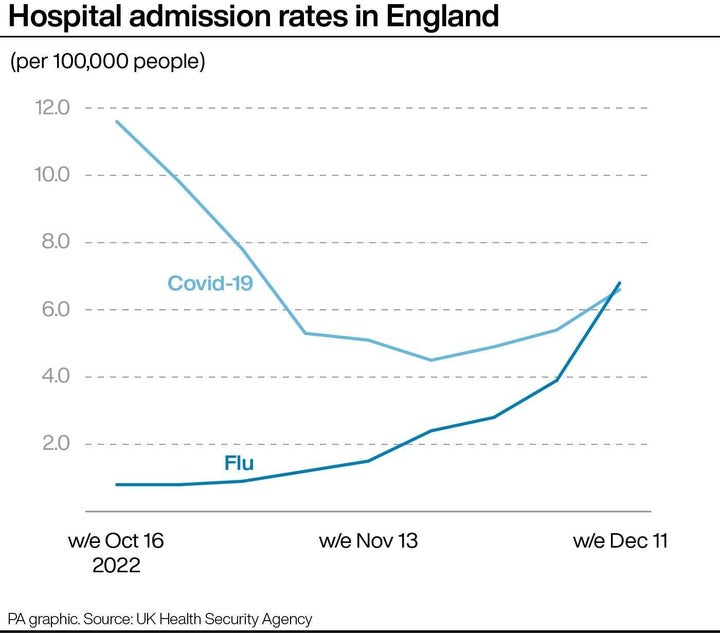
It’s that time of year when just about everyone seems to come down with some form of winter bug, but how can you tell whether you have the flu or a cold?
And more importantly, when should we worry about our symptoms?
Flu admissions in hospitals in England have overtaken those for people with Covid-19 for the first time since the coronavirus pandemic began, new figures show.
Both levels are currently rising, but the rate of flu admissions has jumped sharply week-on-week, while Covid-19 admissions are climbing more slowly.
Of course, a lot of people recover from both colds and flu at home, but it’s important to know the difference between the two so you can spot any flu-related complications should they occur.

Fortunately, the CDC (Centres for Disease Control and Prevention) have official guidance that helps to explains the difference between cold and flu.
Firstly, the flu and a common cold can be easily mistaken for one another as they’re both contagious respiratory illnesses - however, they’re caused by different viruses.
The flu is caused by influenza viruses only and can have serious complications, whereas the common cold can be caused by a number of different viruses and is generally harmless (albeit annoying and uncomfortable).
The symptoms of flu:
- fever or feeling feverish/chills
- cough
- sore throat
- runny or stuffy nose
- muscle or body aches
- headaches
- fatigue (tiredness)
A common cold can present all of these symptoms, however they are much, much milder. Flu symptoms also tend to come on much faster and special tests can tell if a person is sick with flu.
According to WebMD, an easy way to determine whether you have a cold or the flu is to take your temperature – a cold very rarely results in a very high temperature, while fevers are common with the flu.
Regardless of how severe your symptoms feel, if you notice shortness of breath, let your doctor know as pneumonia is a common complication of the flu.
Also, remember to get your flu vaccine. Around 33 million people in England can get a free flu vaccine this year, including everyone aged 50 and over, all primary-age children and some secondary-age children. All children aged two and three are eligible for a flu nasal spray vaccine, which is being offered by local GPs.
The vaccine is also being offered to pregnant women, people in care homes, frontline health and social care staff, carers, those aged six to 49 with a specified health condition, and household contacts of people with weakened immune systems.
Dr Conall Watson, UKHSA consultant epidemiologist, said: “Flu is now circulating widely and we have seen a sharp rise in the rate of hospitalisations for flu this week, particularly among the under-fives and over-85s.
“Admissions are now at the highest point since the 2017/18 season and we are expecting case numbers to continue increasing as we move further into winter.
“The flu vaccine offers the best protection against severe illness and it’s not too late for everyone eligible to get it.
“Uptake is particularly low in those aged two and three, so if your child is eligible please take up the offer.”
Winter calls for us to take greater care of ourselves and each other at this time of year, from our health and homes to our headspace and matters of the heart. Whether you’re seeking motivation or hibernation, HuffPost UK’s Winter Well series is here to help you through the short days and the longer months.
